Your cart is currently empty!
Zantedeschia Varieties: From Calla Lilies to Arum Lilies
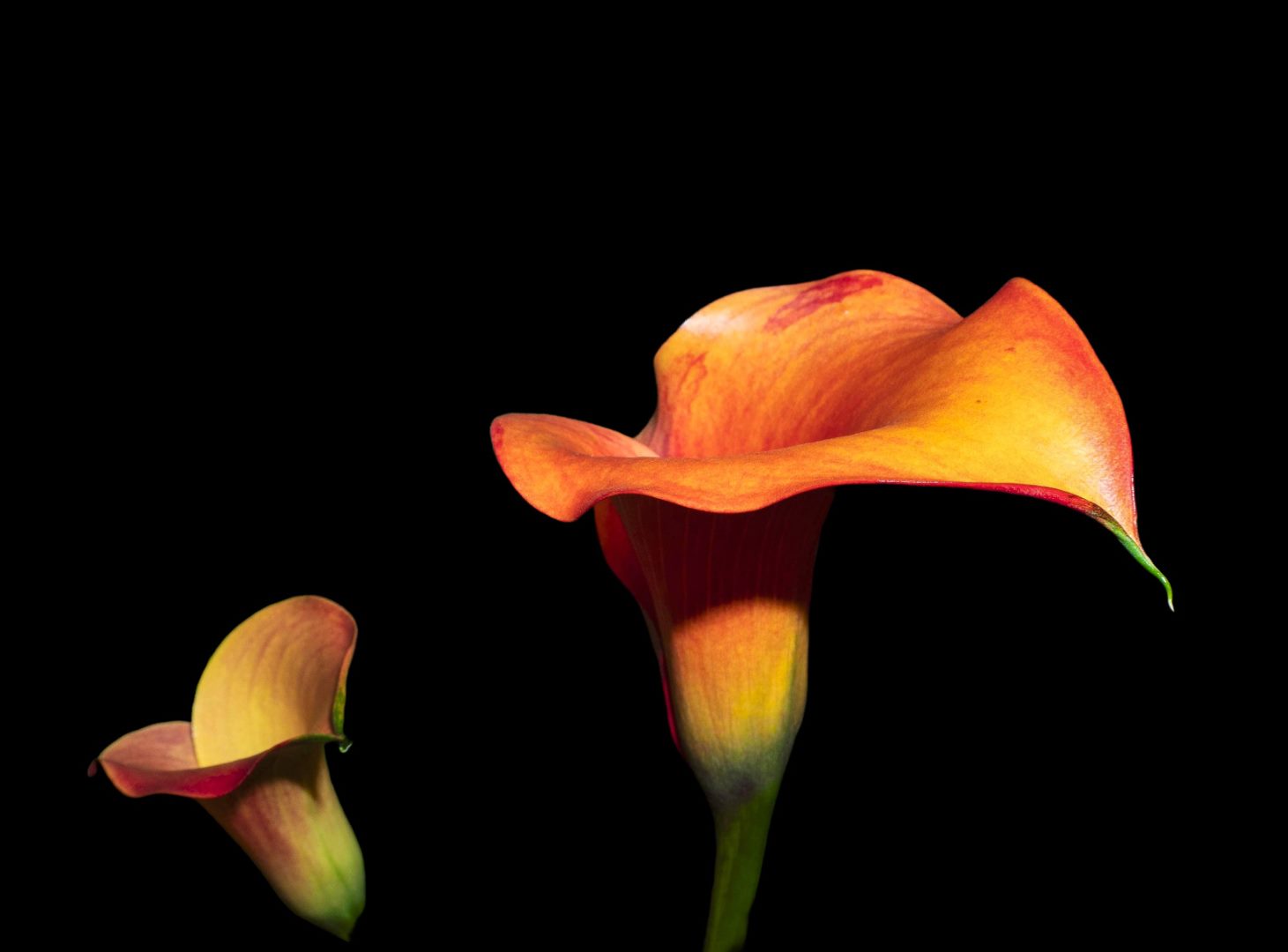
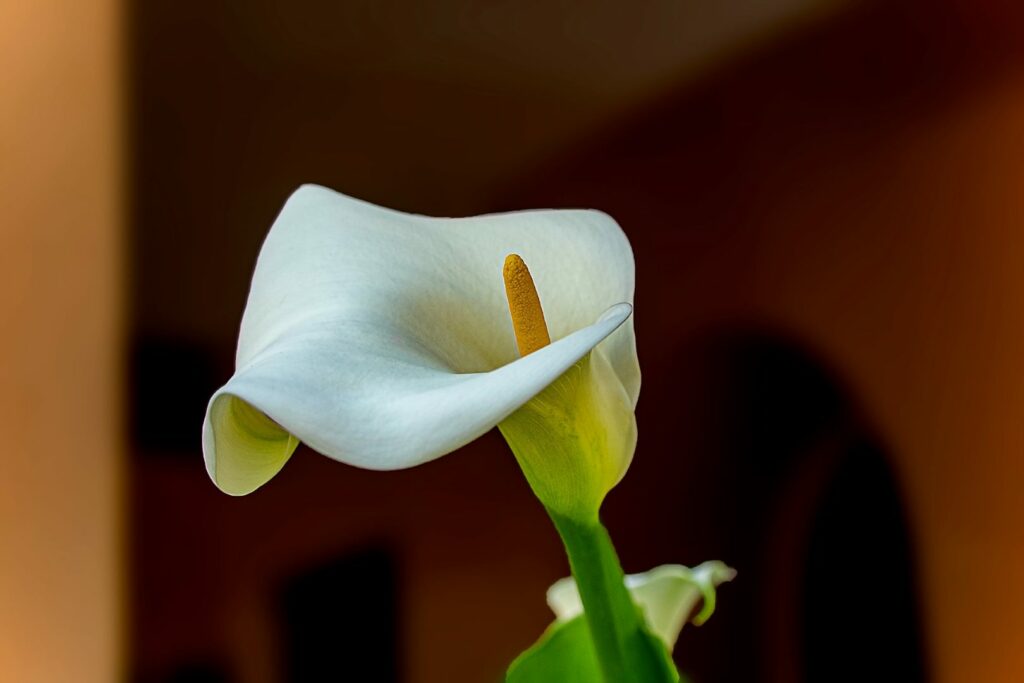
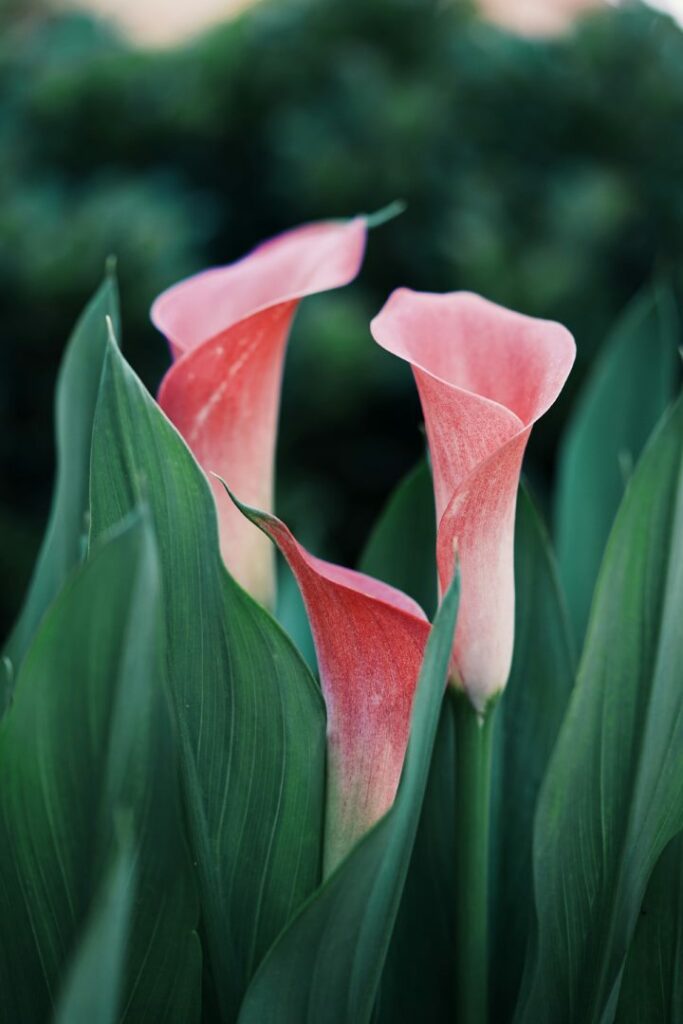
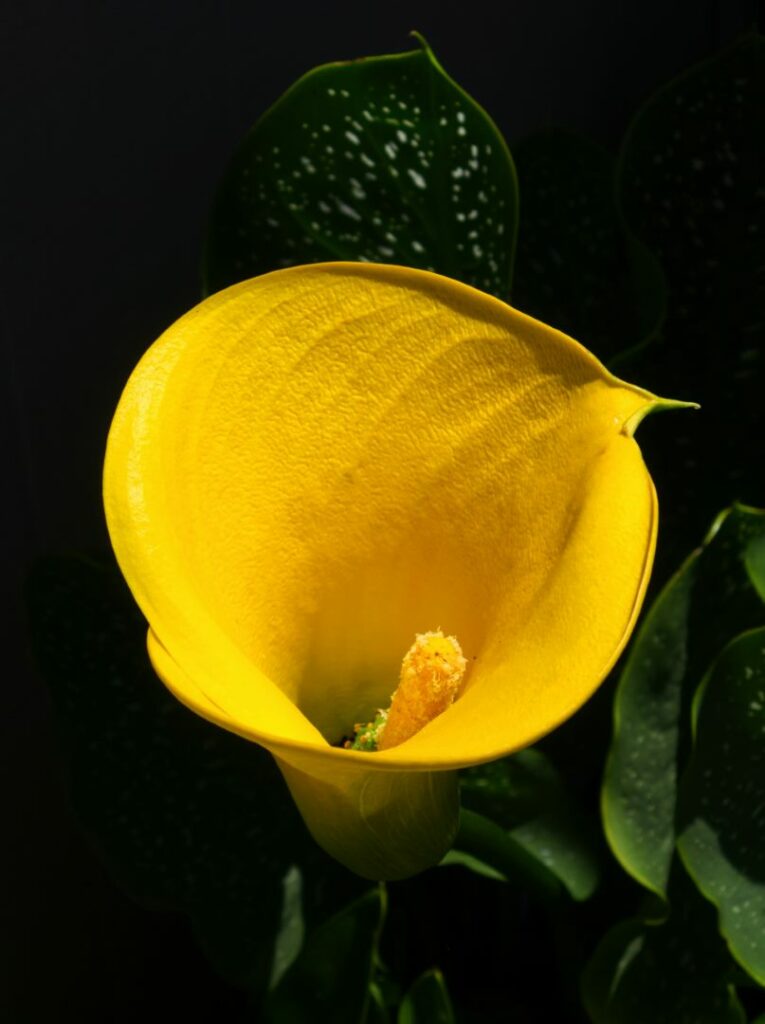
Overview of Zantedeschia Genus
The Zantedeschia genus, commonly known for its stunning and distinctive blooms, comprises eight species of herbaceous, perennial flowering plants. These species belong to the family Araceae and are native to southern Africa, from South Africa northeast to Malawi. The genus includes well-known plants such as the calla lily and arum lily, which are prized for their striking appearance and versatility in both garden and floral arrangements.
Importance and Ornamental Value
Zantedeschia species are renowned for their ornamental value, featuring prominently in gardens, landscapes, and as cut flowers in floral arrangements. Their elegant and colorful spathes, coupled with their lush green foliage, make them a favorite among gardeners and florists alike. The adaptability of these plants to various environments and their relatively easy cultivation add to their popularity. Beyond their aesthetic appeal, some species of Zantedeschia are also used in wastewater treatment, showcasing their practical importance.
Zantedeschia aethiopica
Common Names
Zantedeschia aethiopica is widely known by several common names, including the calla lily and the arum lily. These names reflect its popularity and widespread recognition in horticultural circles.
Conservation Status
According to the International Union for Conservation of Nature (IUCN), Zantedeschia aethiopica is classified as “Least Concern.” This status indicates that the species is not currently at significant risk of extinction in its natural habitat.
Scientific Classification
- Kingdom: Plantae
- Clade: Tracheophytes
- Clade: Angiosperms
- Clade: Monocots
- Order: Alismatales
- Family: Araceae
- Genus: Zantedeschia
- Species: Z. aethiopica
- Binomial Name: Zantedeschia aethiopica (L.) Spreng., 1826
Description
Physical Characteristics
Zantedeschia aethiopica is a rhizomatous herbaceous perennial plant that can be evergreen or deciduous, depending on environmental conditions. It typically grows to a height of 0.6 to 1 meter (2.0 to 3.3 feet) and forms large clumps of broad, arrow-shaped dark green leaves, each up to 45 cm (18 inches) long.
Inflorescence and Spathe
The plant produces large inflorescences characterized by a pure white spathe, up to 25 cm (9.8 inches) long, surrounding a yellow spadix that can reach up to 90 mm (3.5 inches) in length. The spadix emits a faint, sweet fragrance, adding to the plant’s allure.
Toxicity
Zantedeschia aethiopica contains calcium oxalate crystals, making it toxic if ingested. Consuming any part of the raw plant can cause severe burning sensations and swelling in the lips, tongue, and throat, along with stomach pain and diarrhea.
Distribution and Habitat
Native to southern Africa, Zantedeschia aethiopica is found in Lesotho, Mozambique, South Africa, and Eswatini. It has also naturalized in various regions worldwide, including Kenya, Madeira, the Azores, Malawi, New Zealand, Tanzania, Zambia, coastal California, and Australia. In Western Australia, it is classified as a toxic weed and pest, particularly in coastal prairies, wetlands, and riparian areas.
Cultivation and Uses
Notable Cultivars
Several cultivars of Zantedeschia aethiopica have been developed for ornamental purposes:
- ‘Crowborough’: More cold-tolerant, growing to 90 cm (35 inches), suitable for cooler climates.
- ‘Green Goddess’: Features green stripes on the spathes and a longer-lasting bloom.
- ‘Pink Mist’: A delicate cultivar with a pinkish base to the spathe and pink spadix, best developed in partial shade.
- ‘Red Desire’: Rare, with a red spadix instead of yellow.
- ‘White Sail’: Noted for its broad spathe and robust growth.
Hybridization Efforts
Efforts to hybridize Z. aethiopica with Z. elliotiana to introduce new colors have so far resulted in non-viable albino progeny, showcasing the challenges in creating hybrid varieties.
Wastewater Treatment
Zantedeschia aethiopica is used in the treatment of wastewater due to its ability to tolerate high levels of iron and thrive in wet conditions, demonstrating its utility beyond ornamental horticulture.
Symbolism
Zantedeschia aethiopica holds significant cultural symbolism. Until 2011, it was the national flower of Saint Helena, where it grows extensively despite being an invasive species. In Ireland, it is a symbol of Irish republicanism and nationalism, used to commemorate the dead of Easter 1916 and subsequent events.
Zantedeschia (Genus Overview)
Species Count and Distribution
The Zantedeschia genus consists of eight species of herbaceous, perennial, flowering plants. These species are native to southern Africa, from South Africa northeast to Malawi. The genus has been introduced in various forms to every continent except Antarctica, often for ornamental purposes.
Common Names and Misconceptions
Common names for Zantedeschia species include arum lily, calla lily, and golden calla lily. However, it is important to note that these plants are not true lilies (family Liliaceae). Additionally, despite visual similarities, the genera Arum and Calla are distinct from Zantedeschia.
Description
General Physical Characteristics
Zantedeschia species are rhizomatous, herbaceous perennials. Depending on the species, they can grow from 15 cm to over 1 meter tall. They typically form clumps or clusters and have thick underground stems, either rhizomes or tubers.
Inflorescence
The inflorescence of Zantedeschia takes the form of a solitary pseudanthium, featuring a showy spathe and a central spadix. The spathe is a specialized bract that can be white, yellow, or pink, while the spadix contains the true flowers.
Flower Structure
Zantedeschia is monoecious, with separate male and female flowers on the same spadix. Male flowers contain fused stamens, and female flowers have a compound pistil with fused carpels.
Leaf Descriptions (Table I)
| Species | Leaf Shape | Leaf Size (cm) | Maculation |
|---|---|---|---|
| Z. aethiopica | Ovate-cordate or hastate | 15–45 × 10–25 | Rare |
| Z. odorata | Ovate to cordate | None | |
| Z. albomaculata (subsp. albomaculata) | Oblong-hastate | 20–50 × 6–8 | Rare |
| Z. albomaculata (subsp. macrocarpa) | Triangular-hastate | 18–20 × 5–7 | Sparse |
| Z. valida | Ovate to cordate to ovate-orbicular-cordate | None | |
| Z. elliottiana | Orbicular-ovate | 22 × 18 | Present |
| Z. jucunda | Triangular-hastate | Dense | |
| Z. pentlandii | Oblong-elliptic to oblong-lanceolate | Seldom | |
| Z. rehmannii | Lanceolate | 20–30 × 3 | None |
Inflorescence Features (Table II)
| Species | Spathe Color | Flowering Period | Throat Darkened |
|---|---|---|---|
| Z. aethiopica | White-pink | Late winter – late spring | No |
| Z. odorata | White | Late winter – late spring | No |
| Z. albomaculata (subsp. albomaculata) | White-pale yellow-coral pink | Late winter | Yes |
| Z. albomaculata (subsp. macrocarpa) | Yellow | Summer | Yes |
| Z. valida | Cream | Summer | Yes |
| Z. elliottiana | Gold-yellow | Summer | Yes |
| Z. jucunda | Gold-yellow | Summer | Yes |
| Z. pentlandii | Lemon-chrome yellow | Summer | Yes |
| Z. rehmannii | White-pink-maroon | Summer | No |
Taxonomy
Classification
- Kingdom: Plantae
- Clade: Tracheophytes
- Clade: Angiosperms
- Clade: Monocots
- Order: Alismatales
- Family: Araceae
- Subfamily: Aroideae
- Tribe: Zantedeschieae
- Genus: Zantedeschia
Recognized Species (Table of Eight Species)
| Species | Common Names | Native Range |
|---|---|---|
| Zantedeschia aethiopica | Giant white arum lily, common arum lily | South Africa, Eswatini, Lesotho |
| Zantedeschia albomaculata | Spotted arum lily | South Africa to Tanzania |
| Zantedeschia elliottiana | Yellow or golden arum lily | Mpumalanga, South Africa |
| Zantedeschia jucunda | Leolo Mountains, South Africa | |
| Zantedeschia odorata | Western Cape, South Africa | |
| Zantedeschia pentlandii | Mpumalanga, South Africa | |
| Zantedeschia rehmannii | Pink arum lily | South Africa, Eswatini, Mozambique |
| Zantedeschia valida | KwaZulu-Natal, South Africa |
Etymology
The genus Zantedeschia was named by the German botanist Kurt Sprengel in honor of the Italian botanist Giovanni Zantedeschi (1773–1846).
Distribution and Habitat
Natural and Introduced Ranges
Zantedeschia species are native to central and southern Africa, from Nigeria to Tanzania and South Africa. They have been introduced to many parts of the world, including Europe, North America, Central America, South America, Oceania, and Australasia, where they are often considered invasive.
Habitat Preferences
Zantedeschia species prefer marshy areas and can thrive in a variety of habitats, from wetlands to riparian zones. They are adaptable to different soil types and can survive minor frosts. In their native habitats, they grow continuously when water is available and can become deciduous in dry conditions.
Cultivation of Zantedeschia Species
General Cultivation Practices
Zantedeschia species are grown for their ornamental value and are popular in gardens and as cut flowers. They require well-drained soil, regular watering, and partial to full sunlight. Fertilization and protection from strong winds are also beneficial for optimal growth.
Hardy Forms (Arum Lilies)
Examples and USDA Zones
Hardy forms like Zantedeschia aethiopica and Zantedeschia pentlandii can survive winter temperatures below -23 °C (USDA Zone 6) and are suitable for areas where the ground does not freeze completely. Examples include the ‘Millennium Gold’ cultivar of Z. pentlandii.
Tender Forms (Calla Lilies)
Examples and USDA Zones
Tender forms, primarily hybrids of Zantedeschia elliotiana and Zantedeschia rehmannii, can only survive winter temperatures down to -12 °C (USDA Zone 8). These plants must be grown as tender bulbs or houseplants in cooler regions. Examples include ‘Amethyst’ (Z. rehmannii hybrid) and ‘Solar Flare’ (Z. elliotiana hybrid).
Seasonal Grouping
Evergreen vs. Deciduous Species
Zantedeschia species can be grouped based on their seasonal habits. Z. aethiopica and Z. odorata are evergreen or retain their leaves in winter, while other species are deciduous, shedding their leaves in winter and flowering in summer.
Toxicity and Safety Concerns
All parts of Zantedeschia plants are poisonous due to the presence of calcium oxalate crystals. Contact with the plant can cause irritation, and ingestion can lead to severe symptoms, including burning sensations and gastrointestinal distress. Despite this, cooked leaves of some species are sometimes consumed. It is essential to handle these plants with care and keep them away from pets and children.
Notable Species in Detail
Zantedeschia elliottiana
Common Names
Zantedeschia elliottiana is commonly known as the golden arum, golden calla lily, or yellow calla lily.
Scientific Classification
- Kingdom: Plantae
- Clade: Tracheophytes
- Clade: Angiosperms
- Clade: Monocots
- Order: Alismatales
- Family: Araceae
- Genus: Zantedeschia
- Species: Z. elliottiana
- Binomial Name: Zantedeschia elliottiana (W.Watson) Engl.
Description
Zantedeschia elliottiana is a herbaceous plant that grows up to 60 cm (2 feet) tall. It features large, deep green leaves that are spotted with white. The plant produces yellow spathes marked with purple at the base, which surround a yellow spadix. Occasionally, the spadix produces bright yellow berries that are attractive to birds.
Cultivation Tips
- Soil: Well-drained, fertile soil.
- Watering: Regular watering, keeping the soil consistently moist but not waterlogged.
- Light: Prefers partial shade to full sun.
- Temperature: Best grown in USDA Zones 8-11, where it is protected from frost.
- Propagation: Can be propagated through division of rhizomes or from seeds.
- Maintenance: Regular fertilization during the growing season enhances bloom production.
Zantedeschia rehmannii
Common Names
Zantedeschia rehmannii is commonly known as the pink arum lily, pink calla, or red calla lily.
Scientific Classification
- Kingdom: Plantae
- Clade: Tracheophytes
- Clade: Angiosperms
- Clade: Monocots
- Order: Alismatales
- Family: Araceae
- Genus: Zantedeschia
- Species: Z. rehmannii
- Binomial Name: Zantedeschia rehmannii Engl.
Description
Zantedeschia rehmannii is a herbaceous plant that grows to 40 cm (15 inches) tall and 30 cm (12 inches) wide. It has green, unmarked leaves that are semi-erect and not arrow-shaped. The spathe on this summer-flowering species is mauve to rose-purple with paler margins, enclosing a yellow spadix.
Cultivation Tips
- Soil: Well-drained, organically rich soil.
- Watering: Requires consistent moisture, especially during the growing season.
- Light: Thrives in partial shade to full sun.
- Temperature: Suitable for USDA Zones 8-11, where frost is minimal.
- Propagation: Typically propagated by dividing the rhizomes or tubers.
- Maintenance: Protect from strong winds and provide a sheltered spot for optimal growth.
Cultural Impact and Uses
Use in Art and Symbolism
Zantedeschia species have been frequently featured in art and hold significant cultural symbolism. Notably, they appear in many of Diego Rivera’s works, such as “The Flower Vendor,” reflecting their importance in Mexican culture. Georgia O’Keeffe also famously painted calla lilies, highlighting their aesthetic appeal. Beyond art, Zantedeschia aethiopica is a symbol of Irish republicanism and nationalism, used to commemorate the dead of Easter 1916 and subsequent events.
Economic Importance and Commercial Production
The Zantedeschia genus is economically significant, particularly in the horticultural industry. Extensive commercial production of Zantedeschia for cut flowers and planting material occurs in regions like California, Colombia, New Zealand, and Kenya. Plant breeders in these areas continue to develop new hybrid cultivars, expanding the variety of colors and forms available. The white calla lily derived from Z. aethiopica remains a staple in the floral industry, while the colored varieties, mainly derived from Z. elliottiana, Z. pentlandii, and Z. rehmannii, are highly valued for their vibrant hues.
Conclusion
Summary of Key Points
The Zantedeschia genus, encompassing eight species, is notable for its ornamental value and cultural significance. Zantedeschia aethiopica, Z. elliottiana, and Z. rehmannii are particularly prominent species, each with unique characteristics and cultivation requirements. These plants are native to southern Africa but have been introduced worldwide, often becoming invasive in certain regions. They thrive in a variety of habitats and are grown both for their aesthetic appeal and practical uses, such as wastewater treatment.
Final Thoughts on the Genus Zantedeschia
The genus Zantedeschia offers a fascinating blend of beauty, adaptability, and utility. Its species have captivated gardeners, artists, and cultural communities alike. Whether used in gardens, floral arrangements, or artistic expressions, these plants continue to enchant and inspire. Their resilience and versatility ensure that Zantedeschia will remain a beloved and significant genus in the plant world for years to come.




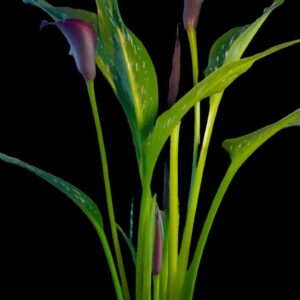

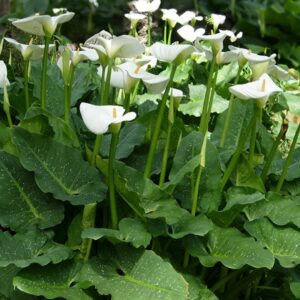

Leave a Reply